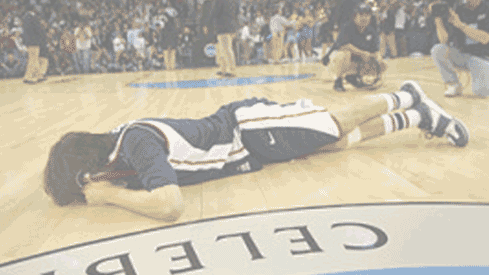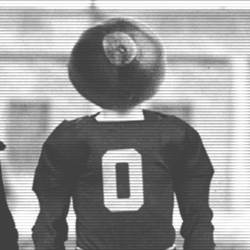As part of a running summer series (since this is the primary recruiting season for lacrosse), I thought it might be informative to explain lacrosse recruiting for American prospects to the uninitiated. This is long, and it may not be your thing. That's fair, and you can just skip a bit until we get closer to July 1st, when the fireworks for 2021 will start.
Until last year, lacrosse recruiting was the Wild West, especially with the advent of social media. The big powers like Hopkins, Syracuse, and Duke were recruiting select 8th graders hard, and basically filling up their classes 3 years before the graduation year arrived. That's how a player like Pat Spencer or Ben Reeves got away from the big teams, they bloomed too late (or not at all) in HS to get the attention.
Beginning last year, however, recruits could not be contacted by coaches until after 1 July between their sophomore and junior year. As a result, 2019s were the final class that had been given attention and the full recruiting press since some of them were in middle school.
Recruits in the 2020 class are still emerging, still honing their skills, trying to get that D1 offer. Which is an interesting move all on its own.
Unlike football or basketball, men's lacrosse doesn't give out full ride scholarships. Often schools will give out something like 7.6 scholarships, which are then cut down to either tuition or room and board, depending upon the coach's decisions.
Usually, better players get more of the pie than role players, as an incentive to come to X school. This is where you will often see top 20 or 50 lacrosse players commit to a school, then end up playing elsewhere on a football scholarship (see: Bryson Shaw).
Football is the better business decision, as full rides with a stipend are hard to pass up. The exception in lacrosse is the service academies. There you get full rides, but obviously have to fulfill military service after. To get these opportunities, of course, you need to be noticed. And this is where things get interesting.
First and foremost, it's important to understand that the country is divided into 2 regions, and they're treated very differently.
It's East Coast (counting DC as the southernmost point, and all states north) and everywhere else. I could do 5 subregional breakouts, but this is 101, so we'll stay basic. The East Coast was, is, and will be for decades the hub of lacrosse.
More HS teams, players, and coaches come out of these 10 states and a district than anywhere else in the world combined. High school programs have been around nearly as long as the first college programs. A handful of public and private schools dominate the landscape, the recruiting ranks, and D1 programs.
These schools get a reputation, form pipelines, and dictate what a lot of D1 coaches do to find players. Prospects in new or emerging lacrosse areas (read: everywhere else) have a tougher time getting noticed without doing some of the things I will detail below to get on a D1 radar.
East Coast coaches and players have the luxury of tradition, coaching, and investment to help them both be the best they can be. Other states have their programs started by transplants from the area, or dad's whose children get into the game.
As such, many really athletic prospects never get the competition or lacrosse IQ to appear at the D1 level. Some certainly do, such as Bubba Fairman for Maryland, who hails from Utah. The lapse in competition for some states is where you see a migration to private schools, one of the most controversial aspects of HS lacrosse.
Private schools dominate the landscape in D1 recruiting. That's just a fact. It's what helps contribute to the notion of lacrosse as a game for only rich white kids. That's not completely true, of course, but many, many players come from glittering private prep schools that cost more per year in tuition than many colleges.
Schools like Bullis (obligatory Bryson Shaw reference), Calvert Hall, Culver Military Academy, Boys Latin, St. Sebastian's, Chaminade, St. Anthony's, and a host of other private institutions put players in the top 100 by the droves.
They do so in three ways. First, they offer essentially year-round coaching, practices, and amenities to players, with the promise of development to the D1 level. Second, private institutions offer the ability to skirt pesky rules about game load, out of state competition, and the like.
Bullis and Bryson Shaw won a "national" title this year because most of the top 25 was either prohibited from playing by state guidelines or weren't on the invite list. Finally, private schools often offer players a "gap year" to focus on academics or lacrosse itself.
The Hill Academy (not to be confused with the Hill School in PA), Culver, and IMG are just some of the schools that do this. It gives players more time to develop mentally and physically for the game, giving them a step up on 18-year-old freshmen who just left high school.
These factors attract public school kids from all over, which naturally causes friction when your biggest studs are suddenly gone because Calvert Hall offered a spot to your prized prospect. Public schools still offer some tremendous opportunities, but programs ebb and flow more often in that sphere as a result of their limitations. West Genesee is a prime example.
The program is so well know there's a drill named after it that everyone does, but they're 12-7 this year. Ohio State's 2019 class has 16 signees, 10 of whom come from a private school. Facing those kind of odds, kids have a big challenge to get noticed. That's where out of season activities come into play.
Lacrosse, even in high school, is often a year-round event. Spring is the pinnacle, as that is the official season for all high schools, public and private. Summer has become a time to get recruited. After playing a full spring season, kids and their parents will try out for traveling club teams, paying fees to try out, then potentially thousands of dollars in dues and travel to go all over the country, trying to catch the eyes of college coaches in a roughly 8-week sprint.
Teams from every state in the union are hustling, trying to get their players noticed, all for a fee of course. Richer prospects will often hire private coaches, particularly on the west coast and in Texas, where many D1 grads have settled. Sometimes it works out.
Other times, players have to add a trip to the school or schools of their dreams for a prospect day, where they have the chance to show off their talents to entire staffs in person. Coaches generally view the prospect day as most important for their prospects, because the perception of commitment to attending the university goes through the roof.
It very much resembles football, in that performance at camps or tournaments will get your name out there, generate content, and get you on a D1 radar. Of course, by generate content, I mean that Inside Lacrosse notices you and says some nice things.
They're the only outlet doing anything with lacrosse recruiting, and they've only got a couple sets of eyes on camps, tournaments, etc. As such, you REALLY have to be exceptional to get noticed. And that's the rub. To be on a D1 roster, you have to catch someone's eye, with literally a thousand other fish in the sea fighting for the same look.
It is a tough road, and it can't be taken lightly what these young men do (and spend!) to get to where they are. And that's just for American kids. Part 2? Canadians. That's on tap for next week.

